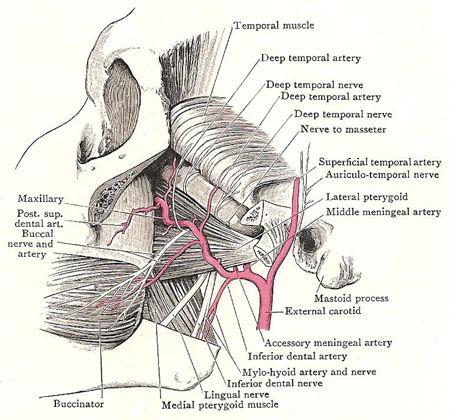maxillary artery

Dissection of the infratemporal fossa, showing the maxillary artery.
The maxillary artery is the larger of the two terminal branches of the external carotid artery in the parotid gland. It arises immediately behind the neck of the mandible, and runs forward medial to it, to reach the lower border of the lateral pterygoid muscle. The artery then passes upward and forward, either superficial or deep to the lower head of the lateral pterygoid. It then leaves the infratemporal fossa by entering the pterygopalatine fossa. Here it splits up into branches, which accompany the branches of the maxillary nerve. These branches supply the external auditory meatus and the middle ear, the muscles of the region, the skull bones and the dura mater. The most important branch is the middle meningeal.
The inferior dental artery also is an important artery as it supplies the teeth of the lower jaw. It descends with the inferior dental nerve to enter the mandibular canal through the mandibular foramen. A slender branch accompanies the mylohyoid nerve; and another branch passes out through the mental foramen with the mental nerve. The venae comitantes of the inferior dental artery almost fill the mandibular foramen; and they end in the pterygoid plexus.


